|
Female condom Faqs
1. Is FC difficult to use?
FC is not difficult to use, but it may take some practice to get used to it. Women should practice putting it in and removing it prior to using it for the first time during sexual intercourse. Research has indicated that Female condoms may need to be tried up to three times before users become confident and comfortable using it. New users should try to insert the device several times, and each time with the body in a different position (e.g. lying down, crouching, sitting) to find the most comfortable one. While individual counselling and personal fitting may help to reassure women, group sessions and peer groups may overcome early abandonment as women can share anxieties, ideas and laughter with each other.
2. What happens if the penis doesn't enter correctly?
It is important that the penis is guided into the centre of FC and not between the vaginal wall and the outer side of Female Condom. Diagrams and/or anatomical models should be used to illustrate this problem at introduction. If the penis does enter incorrectly, the man should withdraw his penis and the couple should start over.
3. What kind of lubricant should be used with FC?
FC comes pre-lubricated with a silicone-based, non-spermicidal lubricant. This lubrication helps assist in the insertion of the device and allows easy movement during intercourse. The lubricant may make Female Condoms a little slippery at first. If the outer ring of FC gets pushed in or pulled out of the vagina, more lubricant may be needed. Also, if FC makes noise during sex, simply add more lubricant. FC can be used with both water-based and oil-based lubricants, whereas male latex condoms should only be used with water-based lubricants. Women, if you suffer from vaginal dryness additional lubricant may be required.
4. Can FC be used more than once?
The Female Condom is approved for a single use only, but re-use has been reported in several countries. WHO, UNAIDS and USAID among others have conducted studies to investigate the safety of disinfection, washing, drying, storage and re-lubrication, followed by re-use, and WHO has convened two technical consultations to review data from these studies.
WHO recommends use of a new male or female condom for every act of intercourse, where there is a risk of unintended pregnancy and/or STI/HIV infection. Recognizing the urgent need for risk-reduction strategies for women who cannot or do not access new condoms, WHO has developed a draft protocol for the safe handling and preparation of used Female condoms intended for re-use. WHO does not recommend or promote re-use, but will make available the protocol, together with guidelines on programmatic issues, to programme managers who intend to evaluate its feasibility and application in local settings. WHO’s Information Update on re-use is available on-line at
www.who.int/reproductive-health/rtis/reuse.en.html
5. Is the inner ring uncomfortable for me or my partner?
Some women do report that the inner ring is uncomfortable. If it is, you can try to place FC differently (i.e. reinsert or re-position the device) so that the inner ring is tucked back behind the cervix and out of way. However, some people report that both the inner and outer rings add to both a man’s and a woman’s sexual pleasure.
6. Is FC big?
There may be an initial negative reaction to FC, because of its size, but this feeling diminishes with use. It is useful to compare FC to an unrolled male condom to highlight that FC is the same length but wider than the male condom. It is also important to note that FC provides added protection because the base of the penis and the external female genitalia are partly covered during use. To reduce potential negative reactions, some programmes have suggested introducing FC rolled up to minimise its size; inserting FC before the initiation of sexual activity; and stressing the advantages of the wider diameter, as many men complain about the constricting nature of male condoms.
7. How do I dispose of FC?
The proper removal and disposal of Female condoms should be included with the packaging of FC as well in introductory training programmes:
| * |
FC does not need to be removed immediately after a man’s ejaculation, like the male condom. But it should be taken out before the woman stands up to avoid the semen spilling out.
|
| * |
The outer ring should be twisted to seal the condom so that no semen comes out. |
| * |
FC can be pulled out and wrapped in the package it came in and/or in tissue. |
| * |
FC should be disposed of in waste containers and not in the toilet. |
| * |
Also, since in many countries women dispose of sanitary napkins in a clean and private way, the same procedures can be promoted for the disposal of FC. |
8. Can I use Female condoms in different sexual positions?
FC can be used in any sexual position; however, additional lubricant may be needed. Some women may feel more comfortable learning to use FC in the missionary position, and then adding other positions after that. Group counselling sessions are often ideal for women to learn from each other how to use the device while having sex in different positions.
FC is not specifically approved or recommended for anal sex, but there are reports from all over the world that it is used for anal sex. Several studies have been done and published and others are on-going. The polyurethane of an FC is stronger than latex and can be used with any kind of lubricant.
9. Can we use a Female condom and a male condom at the same time?
You should not use both condoms at the same time. Using the condoms simultaneously may cause friction resulting in either or both condoms slipping or tearing, and/or the outer ring of FC being pushed inside the vagina.
10. How long will FC last?
The United States Food and Drug Administration has approved FC for a shelf life of 5 years from the date of manufacture. Because of the properties of polyurethane, FC is not affected by differences in temperature and humidity, so no special storage conditions are required.
11. Who can use FC?
- People who want to protect themselves and their partners from unintended pregnancy and STIs, including HIV/AIDS, and show their partners that they care.
- People whose partners cannot or will not use the male latex condom.
- Women who are menstruating.
- Women who have recently given birth.
- Women who have had a hysterectomy.
- Women who are peri- and post-menopausal.
- People who are allergic or sensitive to latex.
- People who are HIV+ or have HIV+ partners.
| Male Condom VS |
FC Female Condom |
|
Rolled on the man’s penis
|
Inserted into the woman’s vagina
|
|
Most are made of Latex
|
FC is made of polyurethane
|
|
Lubricant:
• Can include spermicide
• Can be water-based only; cannot be oil-based
• Located on the outside of condom
|
Lubricant:
• Can include spermicide
• Can be water-based or oil-based
• Located on the inside and outside of condom |
|
Requires erect penis
|
Does not require erect penis
|
|
Condom must be put on an erect penis
|
Can be inserted prior to sexual intercourse, not dependent on erect penis
|
|
Must be removed immediately after ejaculation
|
Does not need to be removed immediately after ejaculation
|
|
Covers most of the penis and protects the woman’s internal genitalia.
|
Covers both the woman’s internal and external genitalia and the base of the penis, which provides broader protection.
|
| Latex condoms can decay if not stored properly |
Is not susceptible to deterioration from temperature or humidity.
|
|
Recommended as one time use product.
|
Recommended as one time use product. Re-use research has been done on the original FC female condom, and WHO issued an Information Update in July 2002 (available at www.who.int/reproductivehealth/rtis/reuse.en.html |
Statistics faqs and pictures provided by the Female health company
|
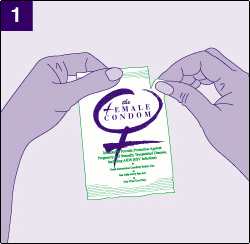
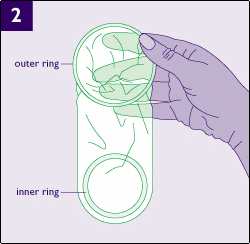

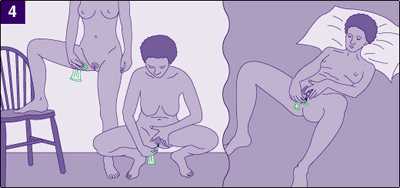

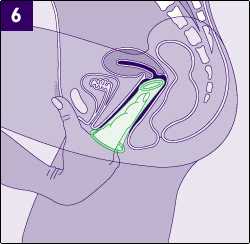

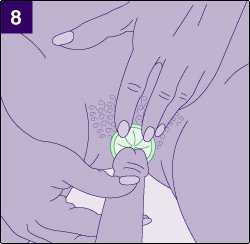







RipNRoll Condoms
Author
Bill is President / CEO of RipNRoll Inc. and a regular contributor at RipNRoll.com. Entrepreneur, Businessman and Father, Bill has kept up his goal of "Protecting the Planet one condom at a time" since 1996